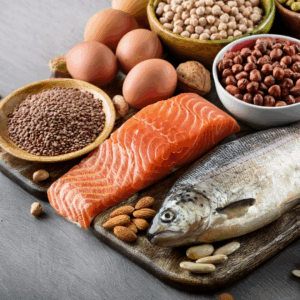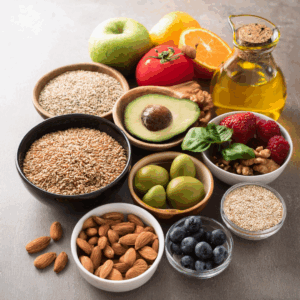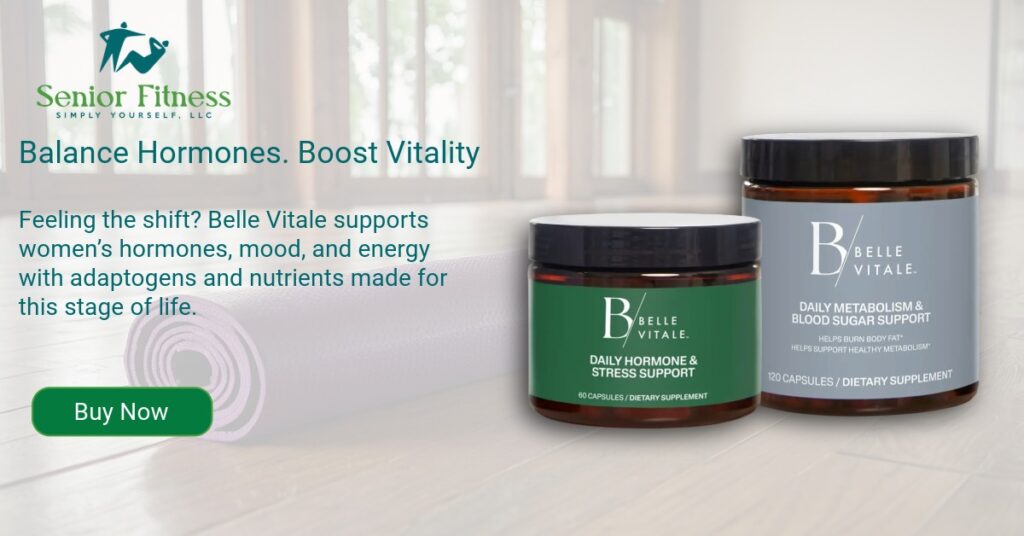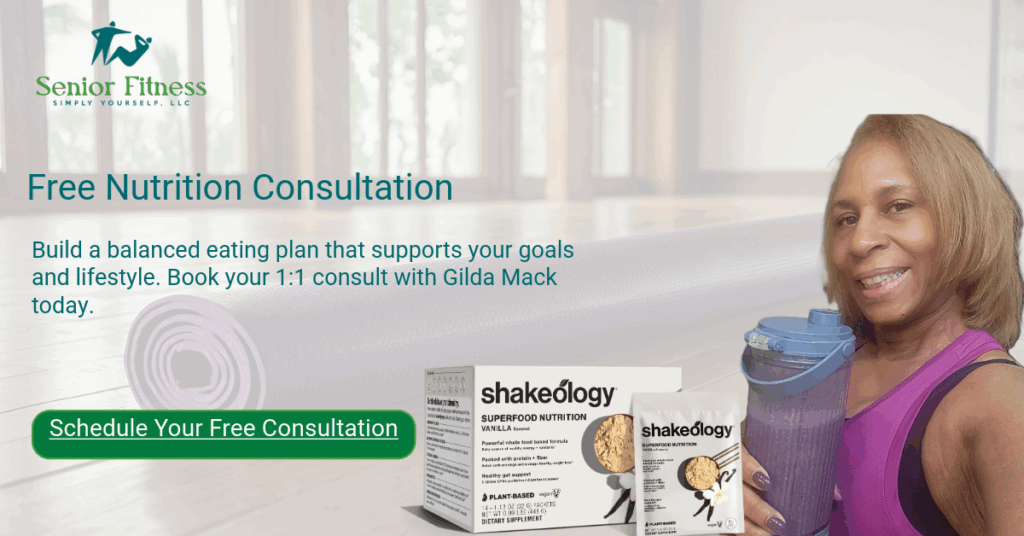As you navigate life beyond 50, understanding how to balance protein, carbs, and fats becomes essential for healthy aging. Prioritizing high-quality protein supports muscle maintenance, while whole grains and vegetables give the energy and fiber you need. Healthy fats, found in foods like avocados and nuts, aid hormone balance and heart health. By tailoring these macronutrients to your personal health goals, you can enhance your overall well-being. Curious about how to make this work for you?
Understanding Macronutrient Needs After 50
As women age beyond 50, understanding their macronutrient needs becomes essential for maintaining health and vigor. A balanced diet with appropriate macronutrient distribution is key. Aim for 25-30% protein, 45-55% carbohydrates, and 20-30% healthy fats. Protein intake supports muscle maintenance, while carbohydrates from whole grains, fruits, and vegetables provide energy levels and crucial nutrients. These carbohydrates should make up 45-55% of your daily calorie intake. Incorporating healthy fats from sources like avocados, nuts, and olive oil helps with hormone production and heart health. Regularly assess and adjust these ratios based on your health goals and activity levels. By doing so, you can help mitigate risks of chronic diseases and maintain overall well-being.
Protein: The Building Block for Muscle Maintenance
As you age, ensuring you get between 1.2 to 1.6 grams of protein per kilogram of body weight is essential for maintaining muscle mass and overall health. By incorporating 25 to 30 grams of high-quality protein at each meal, you can effectively support muscle strength and satiety. Choosing sources like lean meats, fish, and legumes not only provides essential amino acids for muscle repair but also helps counteract age-related muscle loss, keeping you functional and mobile.
Protein Intake Guidelines
When it comes to maintaining muscle mass in women over 50, prioritizing protein intake is crucial. Aim for 1.2 to 1.6 grams of protein per kilogram of body weight daily to support healthy aging. This range helps combat age-related muscle loss and supports overall nutritional needs. Consuming 25 to 30 grams of protein at each meal can effectively maintain muscle mass and promote satiety.  Incorporate high-quality protein sources like lean meats, fish, dairy products, legumes, and plant-based options to guarantee you’re getting essential amino acids. A balanced diet rich in protein is crucial not only for preserving muscle but also for enhancing immune function and aiding recovery, ultimately supporting a vibrant, independent lifestyle.
Incorporate high-quality protein sources like lean meats, fish, dairy products, legumes, and plant-based options to guarantee you’re getting essential amino acids. A balanced diet rich in protein is crucial not only for preserving muscle but also for enhancing immune function and aiding recovery, ultimately supporting a vibrant, independent lifestyle.
Muscle Preservation Strategies
Although aging is inevitable, maintaining muscle mass doesn’t have to be a losing battle. For women over 50, muscle preservation begins with dietary protein. Aim for 1.2 to 1.6 grams per kilogram of body weight daily to support metabolism and counteract muscle loss. Consuming 25 to 30 grams of protein per meal optimizes muscle protein synthesis, essential for maintaining strength. Incorporate diverse protein sources—lean meats, fish, dairy, legumes, and plant-based options—to guarantee a complete amino acid profile. Pair this nutrient profile with strength training to preserve muscle function effectively. High protein intake also enhances satiety, aiding in weight management. Combined with healthy fats and a balanced diet, these strategies promote overall well-being during aging.
Carbohydrates: Fueling Your Energy Levels
Understanding the role of carbohydrates in your diet is essential for maintaining energy levels, especially for women over 50. Carbohydrates should make up 45-55% of your daily calories, providing the energy needed for both daily tasks and metabolic functions. Opt for whole grains, fruits, and vegetables, as these sources are rich in fiber, which aids digestion and stabilizes blood sugar. This can help with weight management by enhancing satiety and preventing overeating.
Aim for 21 grams of fiber daily to support digestive health and reduce the risk of diabetes. It’s vital to limit refined carbohydrates and added sugars, as they contribute to insulin resistance and weight gain, increasing the risk of age-related health issues.

Healthy Fats: Essential for Hormone and Heart Health
As you navigate through life after 50, incorporating healthy fats into your diet becomes increasingly significant for maintaining hormone balance and heart health. Healthy fats, like those in avocados, nuts, seeds, and olive oil, are essential for hormone production, especially during menopause. Omega-3 fatty acids, found in salmon and walnuts, help reduce inflammation and support heart health, important as cardiovascular risks rise with age. Consuming these fats can also aid in absorbing fat-soluble vitamins (A, D, E, and K), addressing increased nutrient needs. Replacing saturated with unsaturated fats improves LDL cholesterol levels, reducing heart disease risk. The American Heart Association advises that 20-35% of your calories come from healthy fats to promote healthy aging in women over 50.
Adapting Macronutrient Ratios for Personal Goals
When reaching the age of 50 and beyond, adjusting your macronutrient ratios can greatly impact your health and well-being. Focusing on a balanced intake of 25-30% protein, 45-55% carbohydrates, and 20-30% fats supports muscle maintenance, energy levels, and hormonal balance. To preserve muscle mass, aim for a protein intake of 1.0 to 1.2 grams per kilogram of body weight. Prioritize carbohydrate sources like whole grains, fruits, and vegetables for sustained energy and blood sugar control. Incorporate healthy fats from avocados, nuts, and olive oil for heart health, especially post-menopause. Your personal goals and activity levels should guide any adjustments, ensuring a tailored approach that promotes healthy aging. Adapt your diet to align with your unique needs and health status.
Macro-Friendly Food Choices for Optimal Health
Even though nutritional needs evolve with age, choosing macro-friendly foods can greatly enhance your health and vigor. For women over 50, a balanced macronutrient distribution is fundamental. Aim for 25-30% protein from lean meats, fish, and plant-based options to maintain muscle health. Consuming 1.0 to 1.2 grams of protein per kilogram of body weight daily supports this goal. Carbohydrates, comprising 45-55% of your intake, should come from whole grains, fruits, and vegetables to guarantee stable energy and adequate fiber intake, essential for digestive health. Healthy fats, accounting for 20-30% of your diet from avocados, nuts, and olive oil, are vital for hormone balance and heart health. Adjusting these ratios based on activity and goals further supports ideal aging.
Practical Tips for Balancing Your Diet
To effectively balance your diet, start by focusing on the three main macronutrient groups: proteins, carbohydrates, and fats. Aim for 25-30% of your dietary intake to be protein, prioritizing sources like lean meats, fish, and legumes, essential for muscle health and healthy aging. Allocate 45-55% to carbohydrates, emphasizing whole foods such as whole grains and vegetables to provide vital nutrients and fiber for heart health and stable blood sugar.
For fats, target 20-30%, choosing healthy sources like avocados and olive oil, while limiting saturated fats. Monitor portion sizes to maintain a caloric deficit of about 500 calories for effective weight management. This balance supports women over 50 in achieving ideal health and sustaining energy levels.






